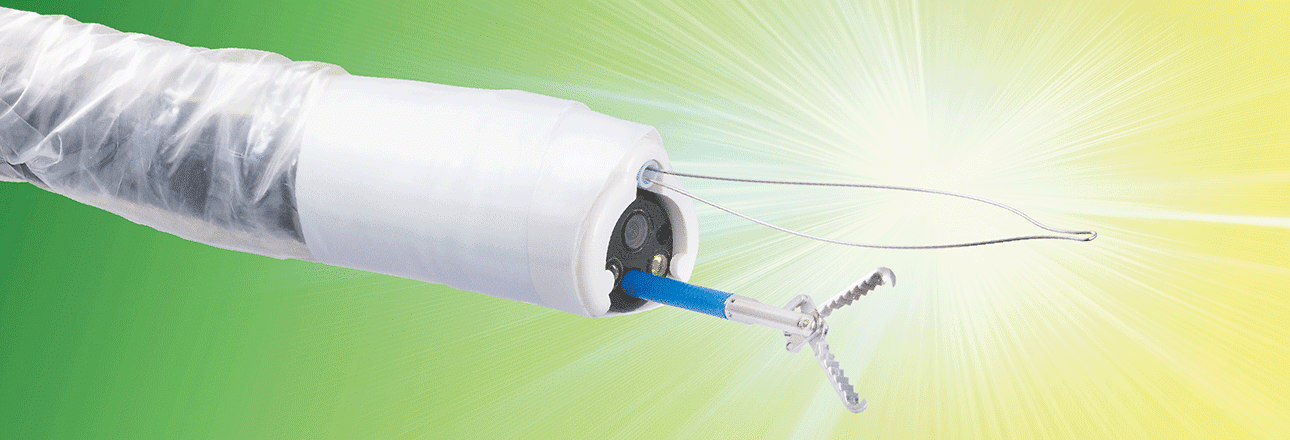Cold-Endoscopic Submucosal Dissection (C-ESD) was performed in live porcine models. 12 C-ESDs were performed: 4 in the esophagus, 4 in the colon and 4 in the rectum. 5 / 8 (62 %) colorectal dissections were performed completely free of electrocautery. All esophageal cases needed at least an initial incision with Hybrid-Knife to gain submucosal access, the subsequent dissection however could be completed with cold technique in 2 / 4 cases in the esophagus. Two perforations occurred in the colon, both during circumferential incision with the biopsy forceps, there were no perforations with the dissector.
A. Parra-Blanco and M. Fraile-López, Nottingham University Hospitals NHS Trust, Nottingham, UK, conducted a preclinical proof-of-concept study aiming to evaluate the feasibility and safety of cold-endoscopic submucosal dissection (C-ESD) in an in vivo porcine model. In C-ESD, the steps of endoscopic submucosal dissection are in principle performed without electrocautery. Circumferential or partial incision (depending on the technique applied and the location and the organ) is performed with a biopsy forceps. Submucosal dissection is carried out using the Coag Dissector (Ovesco, Tuebingen), an endoscopic Maryland dissector which allows blunt dissection of the submucosa when opening and closing the clamp. Besides, large vessels can be pre-coagulated with the Coag Dissector.
Overall, 12 dissections were performed: 4 in the esophagus, 4 in the colon and 4 in the rectum. Feasibility of C-ESD was tested with different ESD techniques: Conventional, pocket-creation method and tunneling. Usual traction methods were applied. Median dissection times, including circumferential incision and dissection for each location were 62, 64.5 and 88 minutes, respectively.
5 / 8 (62 %) colorectal dissections were performed completely free of electrocautery. All esophageal cases needed at least an initial incision with Hybrid-Knife to gain submucosal access, the subsequent dissection however could be completed with cold technique in 2 / 4 cases in the esophagus.
Coagulation with the Coag Dissector was applied prophylactically in vessels larger than 1 mm and in cases of minor bleeding. No major bleeding was encountered. Two perforations occurred in the colon, both during circumferential incision with the biopsy forceps.
The authors concluded that full C-ESD is feasible in the colorectum, whereas a small hot incision is needed in the esophagus. However, in 50 % of the colonic cases, there were perforations caused by the biopsy forceps making the circumferential incision. Therefore, precautions in feasibility studies of colonic C-ESD in humans should be taken and some modifications in the design of the biopsy forceps would be desirable.
Is it time for Cold-Endoscopic Submucosal Dissection? A feasibility study in an esophageal and colorectal live porcine model
Parra-Blanco A, Fraile-López M.
Endoscopy International Open 2020; 08: E1595-E1602. DOI 10.1055/a-1223-2127
 |
 |


 Deutsch
Deutsch  Français
Français 